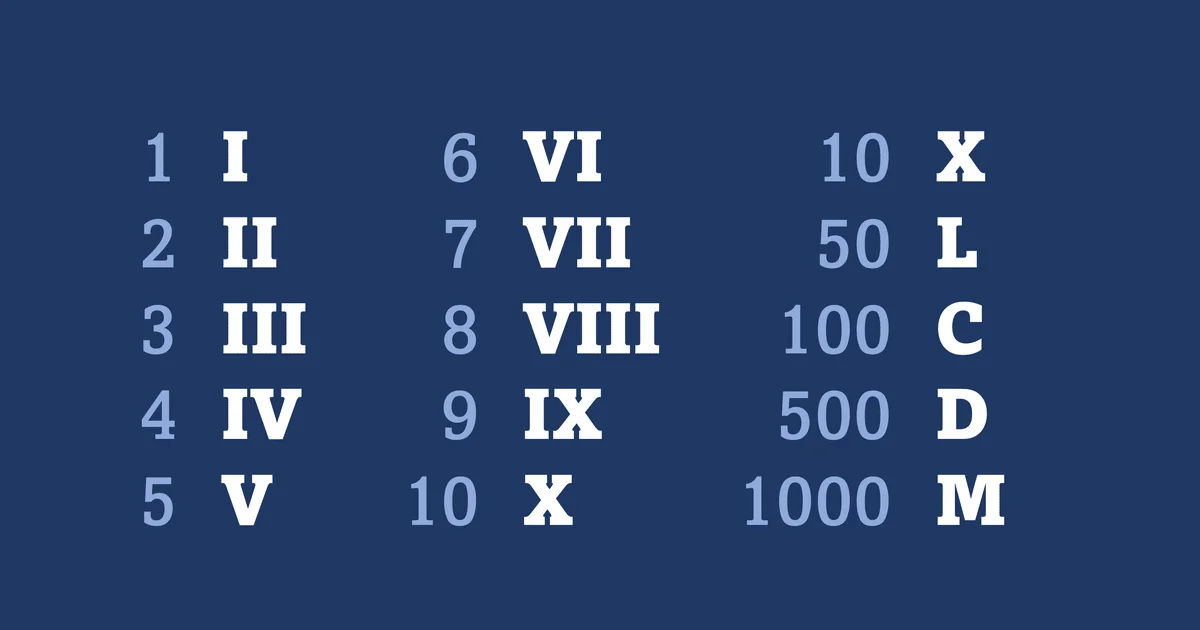Decoding the Future: Understanding 2023 Roman Numerals
2023 is just around the corner and the world is buzzing about the upcoming eventful year. From predictions about new technological advancements, political challenges and even the possibility of discovering new species, 2023 has everyone on the edge of their seats. But have you ever wondered what the year 2023 would look like if it were written in Roman numerals? Let’s unravel the mystery of 2023 Roman numerals.
Understanding Roman numerals
Roman numerals are a numeric system that originated in ancient Rome and were widely used throughout Europe until the 19th century. Roman numerals are written using a combination of letters from the Latin alphabet. Each letter represents a particular value, and when combined, they make up the desired number.
The Roman numeral system
The Roman numeral system is based on seven letters: I, V, X, L, C, D, and M. These letters correspond to different values: I = 1, V = 5, X = 10, L = 50, C = 100, D = 500, and M = 1,000. To represent a number, you need to use different combinations of these letters.
2023 in Roman numerals
If you’re wondering what 2023 would look like in Roman numerals, it is MMXXIII. To understand this, we need to break the number down into smaller chunks.
2023 is made up of 2000 (represented by MM), 20 (XX), and 3 (III). The letter M represents 1000, and when we use it twice (MM), it represents 2000. The letters X and I, when combined, make up numbers from 1 to 9. The letter X represents 10, and when we use it twice (XX), it represents 20. Finally, the letter I represents 1, and we can use it up to three times to represent number 3 (III).
Why is understanding Roman numerals important?
You may be wondering why understanding Roman numerals is important today, especially since most of us use the Hindu-Arabic numeral system (0, 1, 2, 3, 4, 5, 6, 7, 8, 9) in our daily lives. However, Roman numerals are still used today in many ways, such as:
Numerals in movie credits
Movie credits often use Roman numerals to indicate the year of release or the production number. For example, a movie released in 2023 might have MMXXIII in its credits.
Numbering important events
Roman numerals are often used to number important events, such as Super Bowl games and Olympic events. For example, Super Bowl LVIII, which is scheduled for 2024, will be represented as Super Bowl LIX in Roman numerals.
Inscriptions on buildings
Roman numerals are often used in the inscriptions on buildings and monuments to indicate the year they were built or dedicated.
Conclusion
In conclusion, understanding Roman numerals is not only interesting from a historical perspective but also relevant today. Just like the year 2023, which is around the corner, Roman numerals continue to play a significant role in our daily lives. The next time you see a Roman numeral in a movie credit, a building inscription or even a Super Bowl game, you’ll know exactly what it represents.
FAQs
1. Q: What is the history of Roman numerals?
A: Roman numerals originated in ancient Rome and were used widely throughout Europe until the 19th century.
2. Q: Why do we still use Roman numerals today?
A: Roman numerals are still used today in many ways, such as in movie credits, numbering important events, and inscriptions on buildings.
3. Q: How do I read Roman numerals?
A: To read Roman numerals, you need to understand the values of the letters I, V, X, L, C, D, and M and how they combine to form larger numbers.
4. Q: What does MMXXIII represent?
A: MMXXIII represents the year 2023 in Roman numerals.
5. Q: Where can I see Roman numerals being used today?
A: Roman numerals are still used in movie credits, numbering important events, inscriptions on buildings, and even in the names of royalty, such as Queen Elizabeth II.

